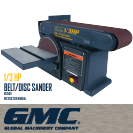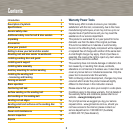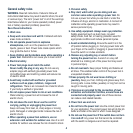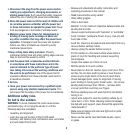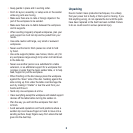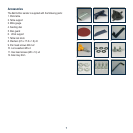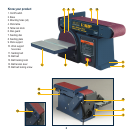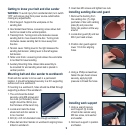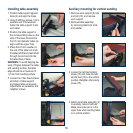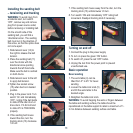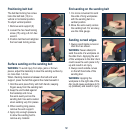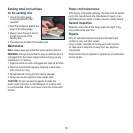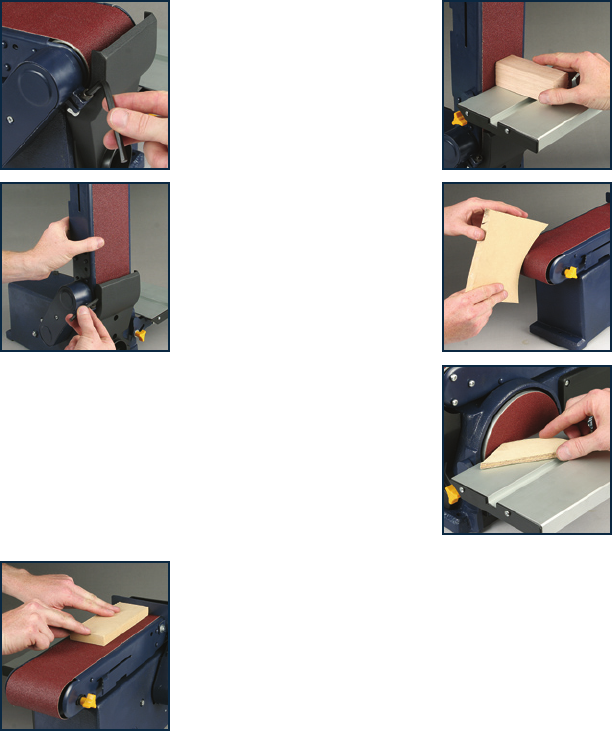
12
Positioning belt bed
The belt bed locking hex screw
locks the belt bed (12) in a
vertical or horizontal position.
To adjust vertical position:
1. Remove work support (9)
2. Loosen the hex head locking
screw (15) using a 6 mm hex
wrench.
3. Position belt bed and retighten
the hex head locking screw.
Surface sanding on the sanding belt
WARNING: To avoid injury from slips, jams or thrown
pieces, adjust the backstop to clear the sanding surface by
no more than 1-2 mm.
When checking clearance between the belt and work
support, press the belt flat against the metal beneath it.
1. Hold the work piece firmly with both hands, keeping
fingers away from the sanding belt.
2. Keep the end butted against
the backstop and move
the work evenly across the
sanding belt. Use extra caution
when sanding very thin pieces.
3. When sanding long pieces,
remove the work support.
4. Apply only enough pressure
to allow the sanding belt to
remove any material.
End sanding on the sanding belt
1. It is more convenient to sand
the ends of long workpieces
with the sanding belt in a
vertical position.
2. Move the work evenly across
the sanding belt. For accuracy,
use the mitre gauge.
Sanding curved edges
1. Always sand inside curves on
idler drum as shown.
WARNING: Never attempt to
sand the ends of a workpiece on
the idler drum. Applying the end
of the workpiece to the idler drum
could cause the work piece to fly
up and result in an injury.
2. Always sand outside curves
on the left hand side of the
sanding disc.
WARNING: Applying the
workpiece to the right side of the
disc could cause workpiece to fly
up (kickback) and result in injury.



